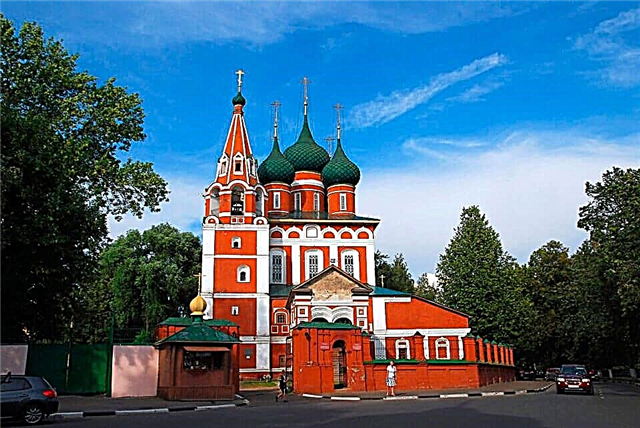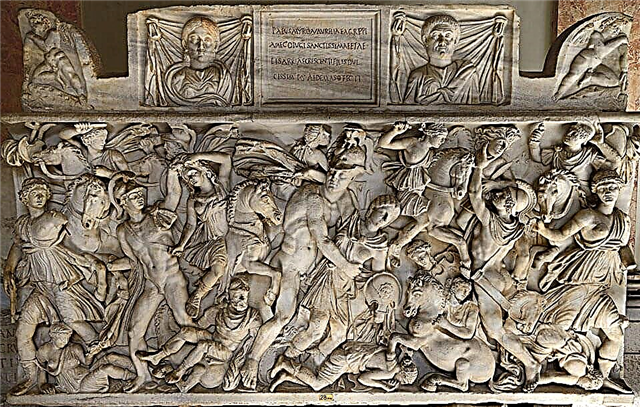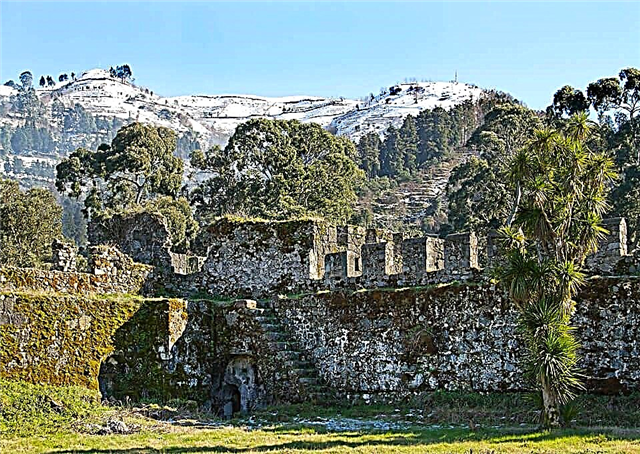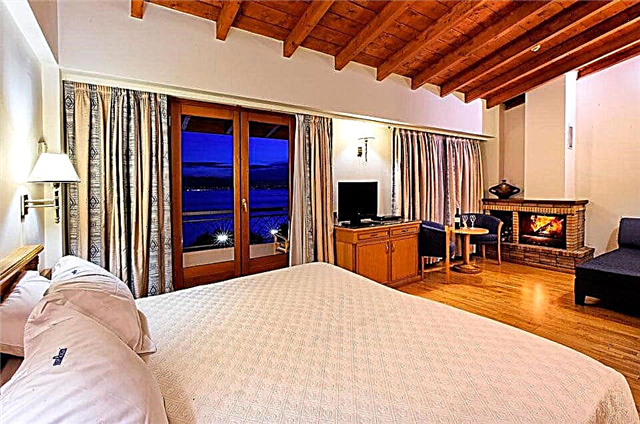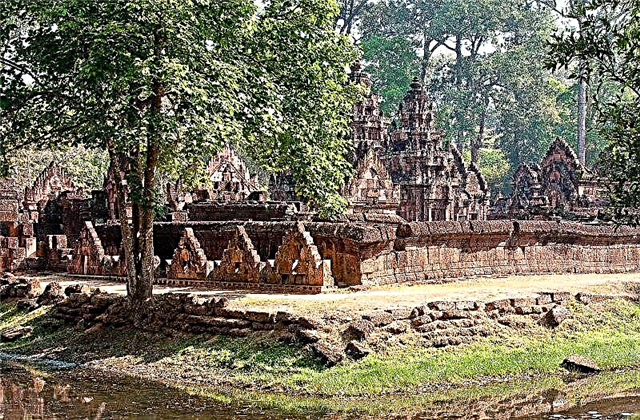Address: Russia, Moscow, Moscow Kremlin
First mention: 1547 year
Main exhibits: Monomakh's hat, double throne (on which Ivan V and Peter Alekseevich were crowned), the throne of Ivan the Terrible
Number of halls: 9
Coordinates: 55 ° 44'58.2 "N 37 ° 36'47.8" E
Content:
The Armory has a special place among the Kremlin museums. It displays world-class treasures that were kept in the treasury of kings and patriarchs for many centuries, as well as skillful works of domestic and foreign jewelers. Many tourists from Russia and other countries come to this museum to see national relics and admire the high level of craftsmanship of old silversmiths, goldsmiths and gunsmiths.

Armory building
History of the treasury
The ancient vault was originally called the "Armory Order". For the first time, they wrote about him in a document of 1547, as about the place where the royal weapons were located. Historians suggest that even in those days, workshops were located here, in which weapons and military banners were made.
The weapons order stood in the Treasury and since the reign of Ivan III Vasilyevich, nicknamed the Great, was located near the Archangel and Annunciation Cathedrals. The spacious courtyard was covered with a roof, and its two windows were facing the palace square.
Inside the courtyard there was a large treasury, to which treasurers from the boyars and their assistants - clerks - were assigned. It kept the royal ceremonial clothes, state regalia, icons, dishes made of silver and gold, as well as valuable utensils. Behind the Great Treasury was the Armory, which was under the control of an armorer. His duties included the storage of the royal sabers and swords, as well as the manufacture of weapons and their repair.
It is known that among the first the palace rank of armourer was received by the governor Andrei Mikhailovich Saltykov (1511). One of the ancestors of the famous Russian poet A.S. Pushkin - boyar Grigory Gavrilovich Pushkin (1647). In addition, at the Kazenny Dvor there was the Konyushenny order, where the tsar's carriages and horse harness, a three-story Spare courtyard and Workshops were kept.

Entrance to the chambers
In the second half of the 17th century, the tsar's treasury turned into a real center of Russian art. Skillful gunsmiths and flag bearers worked in the Moscow Kremlin. Skilled carpenters, metal engravers and gilders, who knew how to work bone and wood, worked in the workshops. In the 1640s, a workshop of tsarist iconographers was created at the Armory, which brought together the best Russian icon painters. In those days, several orders of the Kremlin were under the control of the influential boyar Bogdan Matveyevich Khitrovo. He was an avid collector and put a lot of effort into making the Armory Chamber one of the best museums in the Russian state.
At the beginning of the 18th century, according to the decree of Peter I, the royal treasury was transferred to the jurisdiction of the Senate, and curious things that had previously been stored in different colleges began to be brought here. Soon there were so many antiques that it was decided to keep only the most valuable of them, and sell the rest.
In 1737, a huge fire broke out in Moscow. The trouble happened on the day of Trinity and therefore went down in history as the Trinity fire. Heavy fire swept across the entire territory of the Kremlin. The roofs of the most important cathedrals were burnt out, and the building of the Kazenny Dvor was almost completely destroyed. Fortunately, the tsarist treasury did not suffer, but the flames did not spare the collection of trophy banners conquered by Russia during the battle of Poltava (1709).

The sixth hall: Precious fabrics, obverse and ornamental embroidery of the XIV-XVIII centuries. Secular costume in Russia of the 16th - early 20th centuries
The restoration of the lost took several years. The remaining relics were transferred to the Prison Palace and special rooms were erected for them. In 1812, by order of Emperor Alexander I, a separate building was built for the workshops of the royal treasury on the Senate Square of the Kremlin. However, it did not have a heating system and therefore was too damp for storing relics. When the threat of invasion by Napoleonic troops loomed over Moscow, all the valuables from the storage were transported to Nizhny Novgorod, but two years later they were returned back to Moscow.
In the middle of the 19th century, a new building was erected for the royal treasury. It was located on the site of the old Konyushenny Prikaz and constituted a single complex with the Grand Kremlin Palace, built according to the project of the famous Russian architect Konstantin Andreyevich Ton. Collections of the Armory are located in this place to this day. The two-storey building has a high basement and is decorated with pilasters and carved columns. Its walls are decorated with neat marble medallions depicting Russian princes and tsars.

Fifth hall: Western European silver of the 13th-19th centuries.
What can be seen in the museum
Exhibits of the treasury museum are presented in nine halls, through which sightseeing and thematic excursions are conducted. The guides tell about the history of the state regalia of Russian rulers, the ceremonial court ceremonial, the rich royal arsenal, as well as the history of Russian jewelry art of the 12th-20th centuries. The exposition includes costumes and precious fabrics, silver items from Western Europe, masterpieces of masters from the countries of the East, luxurious horse-drawn carriages and rare diplomatic gifts.
One of the most famous exhibits of the treasury is Monomakh's sable-trimmed hat. This headdress has long been crowned kingdoms of the great dukes and kings. This unique ceremonial relic is decorated with gold embroidery, precious stones and pearls.
In one of the halls you can see the famous double royal throne, made at the end of the 17th century. An unusual throne place was required for John V and his brother Tsarevich Peter - the future emperor Peter I - to sit on it at the same time. It is curious that behind the throne there is a small room with a door. According to one version, an experienced courtier was standing here, telling young rulers how best to respond to foreign ambassadors. Others believe that the sister of the princes, Sophia, was hiding behind the door, who looked after the younger brothers.

Hall 9: Crews of the 16th-18th centuries
All visitors to the museum are impressed by the snow-white throne that belonged to Tsar Ivan IV the Terrible. It is decorated with graceful ivory plates, on which scenes from the Bible and various mythological scenes are carved. Despite the fact that there is absolutely no gold trim and precious stones on the royal throne, it looks very solemn. The treasury also displays several precious gospel salaries. The covers of old books are covered with gold, large gems and skillfully embroidered fabric.
The museum would not have been called the Armory if it did not contain ancient weapons. In the halls of the treasury, the hilts of swords and swords, richly decorated with gold and precious stones, sparkle in different shades. Old military armor, pistols with gold engraving and a full-height model of a knight riding a war horse make a great impression. The figure of the warrior is completely encased in armor, and only one slit for the eyes is left in it. The horse, with the exception of the legs and eyes, is also covered with sheets of engraved metal.
The vestments (sakkos) of metropolitans and patriarchs are exhibited in the museum from old clothes. The most expensive of them belonged to Nikon. These are clothes made of expensive fabric and decorated with gold threads and semi-precious stones. Many visitors stay for a long time near the stand with the caftan and large boots of Peter I. The look of these worn-out shoes leaves no doubt that the Russian emperor liked to walk a lot.

Monomakh's hat
Information for visitors
Tickets to the Armory are sold at the ticket offices of the Moscow Kremlin, which are located in the Alexander Garden, near the squat Kutafya tower. There is also a left-luggage office, where tourists leave their large backpacks and bags before entering the Kremlin.
The halls of the Armory can only be visited as part of excursions, which are held four times a day - at 10.00, 12.00, 14.30 and 16.30. Photographing and filming inside the museum is not permitted.
Ticket offices are open daily, except Thursday, from 9.30 am to 4.30 pm. During the summer tourist season, they open half an hour earlier. Tickets are sold on the day of the visit, 45 minutes before the start of the tour. On the website of the museum there is an opportunity to purchase tickets online. When planning your trip, it should be borne in mind that most of the visitors to the Kremlin are in early autumn, late spring and on weekends.
Children under 16 years old, disabled children, orphans, large families, disabled groups 1 and 2, war veterans, museum employees, as well as conscripts are allowed here for free. If you wish, you can use the audio guide and touch screens in the museum, which are installed in all halls of the Armory.

Throne of Tsar John IV the Terrible
How to get there
The ticket offices of the Moscow Kremlin are accessed from the Aleksandrovsky Sad, Library named after Lenin and Borovitskaya stations of the Moscow metro.

